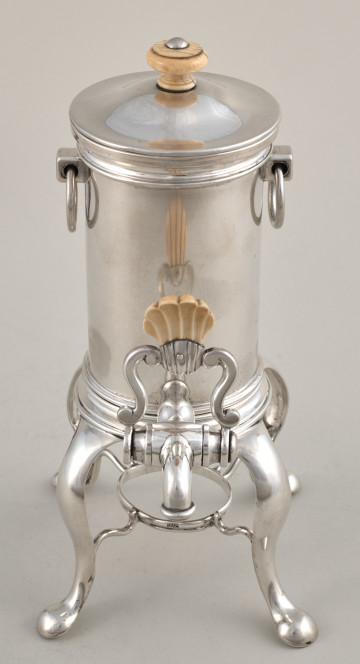
Teapot
19th (?) century
Castle Museum in Łańcut
Part of the collection: Orient
Teapot made of dark brown stoneware, known as red stoneware. Spherical body, decorated at the top with a band of geometric pattern, with a lid inserted into the inner rim of the vessel. The teapot has an S-shaped spout, on the other side of the vessel there is a bowed handle. The lid is flat, made of stoneware, with a handle in the shape of a Fo dog (Buddha’s lion) figure. The lid is attached to the spout and handle by a chain made of gilded metal in an unusual and very interesting way – the Fo dog figurine has a metal collar and the chain is attached to it. Red stoneware is the name for a group of products made from fine-grained clay; they are impervious, hard and well-baked, and do not soak during use. Such vessels were brought with tea by the East India Companies to Europe and were used for brewing tea. Similar vessels began to be made in the 17th century in the Netherlands and England, and in 1707 Johann Friedrich Bóttger managed to achieve this effect by baking pottery for King of Saxony, Augustus II the Strong. The thriving Dutch manufacturing centre was Delft. Teapot from China, Yixing, Kiangsu province, dating to the 17th/18th century.
Object type
Orient
Owner
Castle Museum in Łańcut
Identification number
Location / status